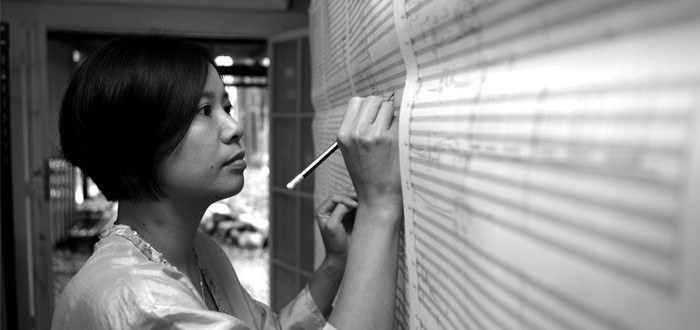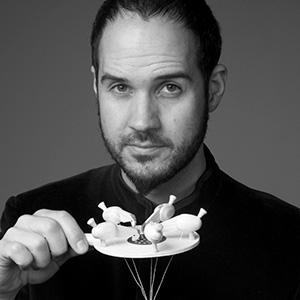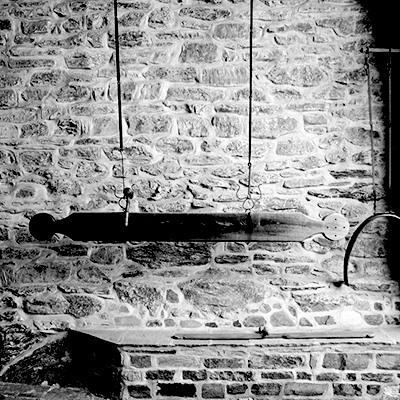
ATLAS OF THE SKY ORIGINS
Acclaimed Australian composer Liza Lim & Speak Percussion's Eugene Ughetti on the stories of the skies and how ancient tradition influenced their world premiere work, Atlas of the Sky.
'The stars: what are they?
They are chunks of ice
reflecting the sun; they are lights afloat on the
waters beyond the transparent dome; they are nails
nailed to the sky; they are holes in the great curtain
between us and the sea of light; they are holes in
the hard shell that protects us from the inferno beyond'
Excerpt of Chapter 31: ‘The Stars’ from Eliot Weinberger’s 'An Elemental Thing'
Cultural, spiritual, religious or symbolic, tradition transcends time and space, reflects on the past and informs the future, as stories of people and places carry on and evolve from one generation to the next. And the mythology of the skies and stars span many diverse cultures: Indigenous Australia, Ancient Greece, Traditional China, Ancient Egypt just to name a few.

Acclaimed Australian composer Liza Lim invokes the universal mythologies of the stars as the foundation of her new work for vocalist Jessica Aszodi and Speak Percussion, Atlas of the Sky.
The new work features three striking poems and evolved from a simple exercise between Lim and Speak Percussion’s Artistic Director, Eugene Ughetti, Lim says:
'The way Atlas of the Sky evolved as a proposition for a work is very special to me. It came out of a very simple exercise with Eugene Ughetti, writing a piece for solo woodblock. The idea that the humblest object can reveal a whole cosmos of sound was really the starting point.
'There are three poems that are used in this work. The first is 'The Stars' by Eliot Weinberger, a text which is in essence very simple but unfolds an incredibly rich set of resonances, where different ideas of what the stars represent from one culture to the next speak to each other. He repeatedly asks the question ‘what are the stars? Are they nails nailed into the sky? Are they holes in the curtain that separates us from an all-encompassing light? Are they messengers for lovers? Do they portend death, love, war?'
'I've also drawn on two poems by contemporary Chinese poet Bei Dao, which also explore ideas of the stars but in conjunction with the idea of ‘the crowd’, and the power that is held by ‘the crowd’. Bei Dao sees the crowd as a mass into which we can read patterns, stories and find rituals of transformation.'
These texts are brought to life in Lim’s musical composition - an expressive percussive feat that fuses elements of contemporary opera and world percussion, which Speak Percussion’s Artistic Director Eugene Ughetti describes as 'music that is never afraid to explore sounds which may at times seem guttural, extremely tactile and fragile, explosive and over saturated. This creates the effect of an extraordinary level of expression which goes well beyond the sound language we are used to experiencing in traditional music.'

'Liza makes use of an array of exotic percussion instruments from disparate cultures around the globe. Such instruments include the piccolo woodblock, often associated with Chinese Opera. The reco reco, a Brazilian scraper instrument made of suspended spring coils. Spring Drums, Waldteufels and Spinning Tops both modern and ancient toy instruments used by children. Den Den Daiko, another toy instrument, this time a Japanese taiko drum shaken and seen famously in the classic 80's film Karate Kid. A series of cowbells ranging from the Latin style, African style through to the traditional Western European ones which hang around the necks of animals known as Almglocken' Eugene says.
In the opening of Atlas of the Sky, the sound of a Semantron plays a starring role. The Semantron is a percussion instrument, typically made of wood or metal, that was used in monasteries to summon people to prayer, or at the start of a procession. The origin of the Semantron has been traced to at least the beginning of the 6th century, when the instrument replaced the trumpet as the agent of assembly in the monasteries of Palestine and Egypt and later in Russian history. The instrument has also been likened to the ringing of bells throughout history.

Syrian Orthodox history holds the semantron in high religious regard, informed by the ancient story that attributes its invention to Noah (the tenth and last of the pre-Flood Patriarchs who features boldly in the Bible’s Genesis flood narrative) whereby God told Noah; “Make for yourself a bell of box-wood, which is not liable to corruption, three cubits long and one and a half wide, and also a mallet from the same wood. Strike this instrument three separate times every day: once in the morning to summon the hands to the ark, once at midday to call them to dinner, and once in the evening to invite them to rest".
It is these spiritual and religious ancient traditions that ground Liza Lim’s striking composition in “a sound that feels more human and universal rather being a music of a specific time and place, a timeless sound both ancient and contemporary” says Eugene.
'[stars] are spheres of crystal and
their movement creates a music in the sky; they are fixed
and we are moving; we are fixed and they are moving'
Excerpt of Chapter 31: ‘The Stars’ from Eliot Weinberger’s 'An Elemental Thing'

